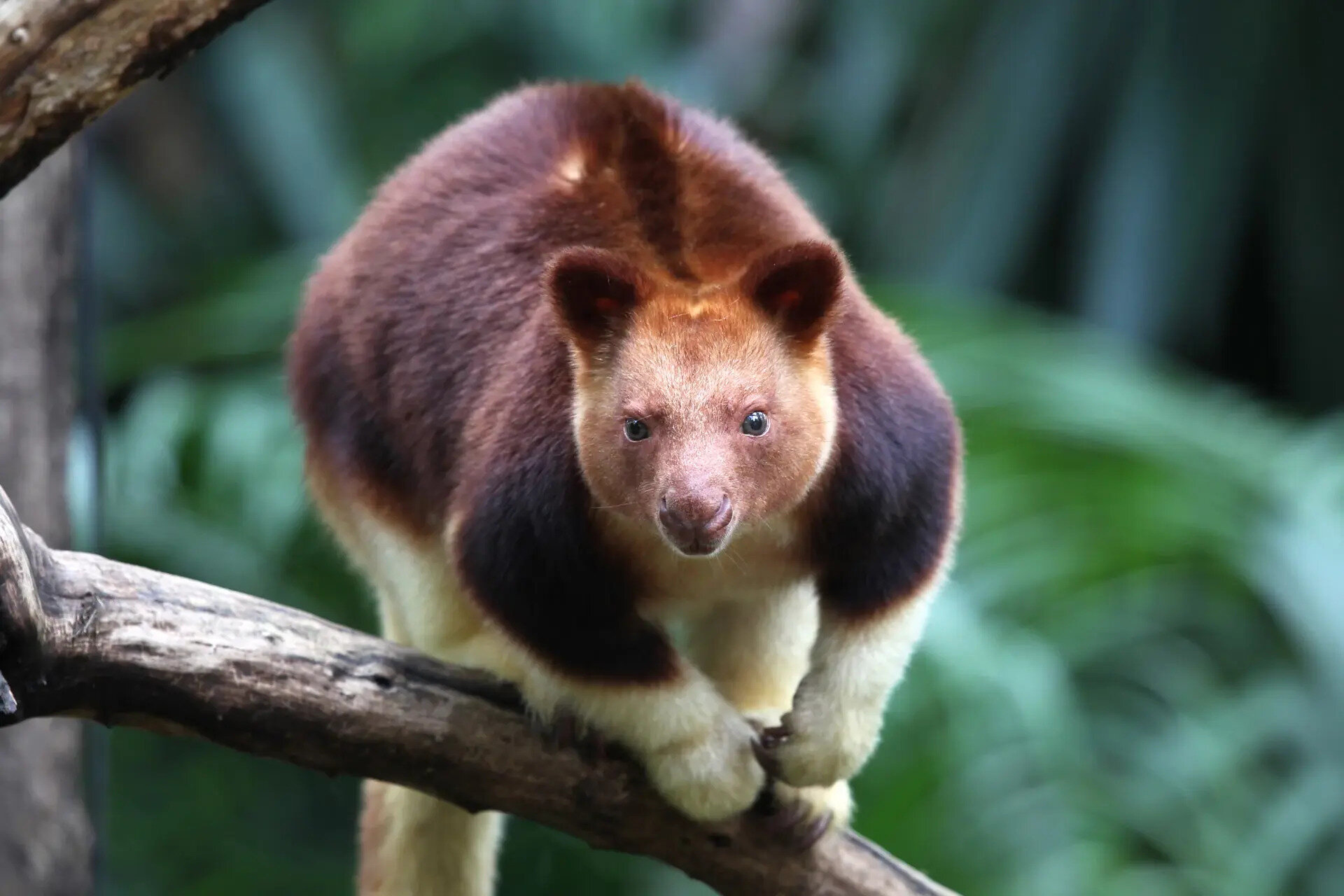
Did you know that tree kangaroos are marsupials that live in trees? These unique creatures, found primarily in Papua New Guinea, Indonesia, and Australia, have adapted to life in the forest canopy. Unlike their ground-dwelling relatives, tree kangaroos have strong forelimbs and long tails for balance, allowing them to leap from branch to branch with ease. Their diet consists mainly of leaves, fruits, and flowers. Sadly, many species of tree kangaroos are endangered due to habitat loss and hunting. Learning about these fascinating animals can help raise awareness and support conservation efforts. Ready to dive into 35 amazing facts about tree kangaroos? Let's get started!
What is a Tree Kangaroo?
Tree kangaroos are fascinating creatures that live in the treetops of rainforests. These unique marsupials have adapted to life in the trees, making them quite different from their ground-dwelling relatives. Let's dive into some intriguing facts about these arboreal wonders.
- Tree kangaroos belong to the genus Dendrolagus, which means "tree hare" in Greek.
- Unlike their ground-dwelling cousins, tree kangaroos have strong forelimbs and shorter hind limbs, perfect for climbing.
- They are native to the rainforests of New Guinea, northeastern Queensland, and some nearby islands.
- There are about 14 different species of tree kangaroos.
- The Goodfellow's tree kangaroo is one of the most well-known species.
Physical Characteristics
Tree kangaroos have several unique physical traits that help them thrive in their arboreal habitats. These adaptations make them exceptional climbers and jumpers.
- Their tails are long and used for balance while navigating the treetops.
- Tree kangaroos have padded feet with rough soles to grip branches securely.
- They possess curved claws that aid in climbing and gripping tree bark.
- Their fur is usually thick and woolly, providing insulation in the cool, damp rainforest environment.
- Tree kangaroos can rotate their ankles 180 degrees, allowing them to climb down trees headfirst.
Behavior and Diet
Tree kangaroos exhibit interesting behaviors and have a diet that reflects their unique lifestyle. Understanding their habits can give us a better appreciation of these creatures.
- They are mostly solitary animals, coming together only for mating.
- Tree kangaroos are primarily nocturnal, being most active during the night.
- Their diet consists mainly of leaves, fruits, flowers, and bark.
- They have a slow metabolism, which means they don't need to eat as frequently as other animals.
- Tree kangaroos can leap up to 30 feet from one tree to another.
Reproduction and Lifespan
Reproduction in tree kangaroos is quite similar to other marsupials, but there are some unique aspects worth noting.
- Female tree kangaroos have a pouch where their young, called joeys, develop after birth.
- Joeys are born very small and undeveloped, then crawl into the pouch to continue growing.
- A joey stays in its mother's pouch for about 10 months before venturing out.
- Tree kangaroos reach sexual maturity at around two years of age.
- In the wild, they can live up to 15 years, while in captivity, they may live longer.
Conservation Status
Tree kangaroos face several threats that have led to a decline in their populations. Conservation efforts are crucial to their survival.
- Habitat destruction due to logging and agriculture is a significant threat to tree kangaroos.
- Hunting for their meat and fur also poses a danger to their populations.
- Some species, like the Wondiwoi tree kangaroo, are critically endangered.
- Conservation programs and protected areas are essential for their survival.
- Zoos and wildlife sanctuaries play a vital role in breeding and raising awareness about tree kangaroos.
Interesting Tidbits
Here are some additional fun facts about tree kangaroos that highlight their uniqueness and charm.
- Tree kangaroos are excellent swimmers, despite spending most of their time in trees.
- They communicate through vocalizations, such as clicks and hisses.
- Tree kangaroos have a keen sense of smell, which helps them locate food.
- They can sleep for up to 15 hours a day.
- Tree kangaroos are known to be quite curious and will investigate new objects in their environment.
Cultural Significance
Tree kangaroos hold a special place in the cultures of the regions they inhabit. They are often featured in local folklore and traditions.
- In Papua New Guinea, tree kangaroos are considered symbols of strength and agility.
- Some indigenous tribes believe that tree kangaroos have spiritual significance and are protectors of the forest.
- Traditional stories often depict tree kangaroos as clever and resourceful animals.
- Tree kangaroo fur is sometimes used in ceremonial attire by indigenous peoples.
- Efforts to conserve tree kangaroos also help preserve the cultural heritage of the communities that share their habitat.
The Final Word on Tree Kangaroos
Tree kangaroos are fascinating creatures that blend the agility of a monkey with the charm of a kangaroo. Found mainly in the rainforests of Papua New Guinea and northeastern Australia, these marsupials are adept climbers, using their strong limbs and long tails for balance. They have a unique diet, munching on leaves, fruits, and flowers. Sadly, deforestation and hunting pose significant threats to their survival. Conservation efforts are crucial to ensure these unique animals continue to thrive. Learning about tree kangaroos not only enriches our understanding of biodiversity but also highlights the importance of preserving their natural habitats. So, next time you think of kangaroos, remember these incredible tree-dwelling relatives. They’re more than just a curiosity; they’re a vital part of our world’s ecological tapestry.
Was this page helpful?
Our commitment to delivering trustworthy and engaging content is at the heart of what we do. Each fact on our site is contributed by real users like you, bringing a wealth of diverse insights and information. To ensure the highest standards of accuracy and reliability, our dedicated editors meticulously review each submission. This process guarantees that the facts we share are not only fascinating but also credible. Trust in our commitment to quality and authenticity as you explore and learn with us.
